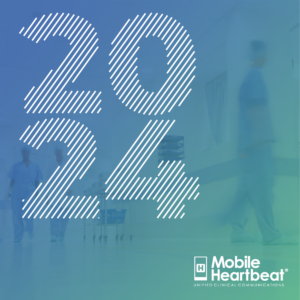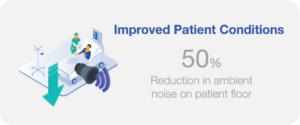Clinician burnout is often caused by significant patient burdens and cumbersome workflow processes, both of which are exacerbated by the coronavirus pandemic. That’s why healthcare organizations like HCA Healthcare affiliates Chippenham Hospital and Johnston-Willis Hospital (known collectively as CJW) have taken strides to support their physicians.
On February 18, we invited Chippenham and Johnston-Willis Hospitals CEO William Lunn, MD, along with Mobile Heartbeat experts, to review strategies for removing communication workflow burdens and returning physician time to caring for patients. Lunn emphasized that when physicians feel burned out by long hours, administrative burdens and technological barriers, they may relocate to a different practice, or quit medicine altogether.
In an effort to reduce the cognitive burden on providers, CJW Hospitals have implemented a unified smartphone platform built to enable more collaborative patient care.
1. Intuitive Visual Cues
The key to fostering collaborative care is to make seeking the right colleague as simple and seamless as possible. With an enterprise-wise directory that tracks real-time colleague availability, clinicians can find exactly who they need, without wasting time messaging someone who is offline or busy in surgery. Customizable statuses also help to dictate a chain of command in situations where a colleague is tied up and would like to direct queries to an available provider. These capabilities save time over the course of a shift to make it easier to find the correct care team member at the correct time.
2. Remote Work Capabilities
Many providers need to be available to their colleagues even when they’re off-campus or in a different facility for the day. Even when they’re not on hospital grounds, they often need to be able to check on patients and coordinate care remotely. An application that provides secure access to patient waveforms and continues to receive critical alerts outside of the hospital makes it much easier for providers to stay updated on their patients’ care plans, without having to physically be present in the unit.
3. Privacy Protection
Protecting the privacy and personal time of providers is one of the most important elements of mitigating burnout and fatigue, and it’s an area where many organizations struggle to succeed. Some capabilities that support physician privacy include call masking—disguising the provider’s number in the directory so colleagues can still call, but will not have access to the number itself—and custom caller ID, which displays a pre-set number when providers call colleagues. For instance, if a provider is placing a call on their personal phone, they can choose to have the caller ID display their office phone number. By limiting who in the hospital has access to providers’ contact information, organizations are protecting providers from nuisance calls while they are taking personal time.
Organizations like CJW that implement team-based communication platforms and take care to mitigate physician burnout are most likely to improve satisfaction and collaboration across the entire care team. By taking these steps to remove administrative and organizational barriers, providers can return time to patient care and to self-care.




